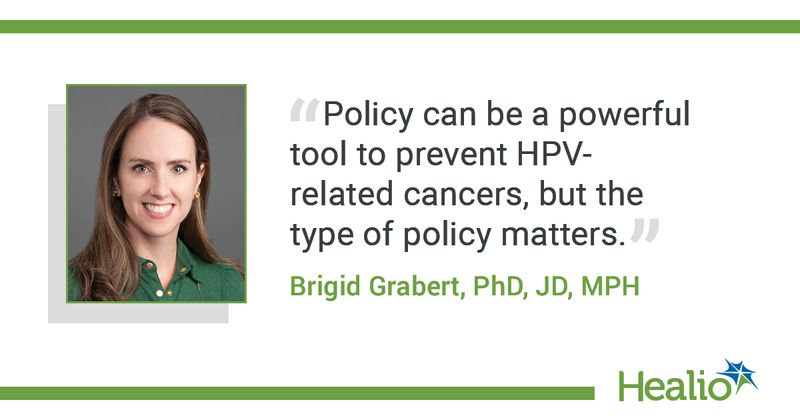School entry requirements associated with increased HPV vaccine coverage
Key takeaways:
- School entry requirements for HPV vaccination are associated with increases in coverage.
- These requirements are so far present only in Rhode Island, Virginia, Washington, D.C., Puerto Rico and Hawaii.
School entry requirements are associated with increases in HPV vaccine coverage among adolescents in the United States, according to a study published in Pediatrics.
HPV vaccination is recommended for children at age 11 and 12 years but may be started as early as age 9 years, which research has shown could improve coverage. Reframing it as a cancer vaccine also has been shown to improve uptake.

Last year, a study published in MMWR showed that the rate of vaccination among teens aged 13 to 17 years did not increase for the first time ever in 2022.
“There have been many different types of state and federal policies aimed at increasing adolescent HPV vaccination coverage, but it was unclear which policies were actually effective,” Brigid K. Grabert, PhD, JD, MPH, assistant professor of implementation science at Wake Forest University School of Medicine, told Healio. “Since policies have the potential to improve population health, we wanted to investigate which ones accomplish their objective so policymakers can focus efforts on effective policies and ultimately more adolescents are protected from HPV cancers.”
Grabert and colleagues systematically reviewed studies published between 2009 and 2022 that assessed the association between HPV vaccination policies and HPV vaccination coverage among U.S. adolescents aged 9 to 18 years. They assessed the quality of each study using an adapted quality assessment tool.
Among 36 eligible studies, 14 evaluated HPV vaccine school entry requirements (SERs). Among them, eight studies showed a positive association between SERs and HPV vaccination coverage, in particular those in Rhode Island and Washington, D.C. — two of only five jurisdictions that require HPV vaccination for school entry, the others being Hawaii, Puerto Rico and Virginia.
Additionally, all seven studies that evaluated SERs for other adolescent vaccines showed positive spillover effects for HPV vaccination, and seven of nine federally funded policies related to Vaccines for Children and Medicaid were consistently associated with higher HPV vaccination coverage, the researchers reported.
One common policy — requiring schools to distribute information to parents or students to increase awareness of the benefits of HPV vaccination — “was usually not associated with increases in adolescent HPV vaccination coverage,” Grabert noted.
“Policy can be a powerful tool to prevent HPV-related cancers, but the type of policy matters,” Grabert said. “Not all policies are effective, but school entry requirements and federal policies could further the effort to reach the Healthy People 2030 goal of 80% of adolescents who get the recommended doses of HPV vaccine. ... Research suggests that school entry requirements for HPV vaccination can work, but educational mandates rarely do.”
